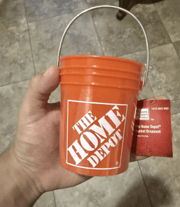
When federal leaders stall, squabble, or sidestep the urgent needs of everyday families, it’s often the folks closer to home who rise to the occasion.
While grocery budgets hang in the balance and food insecurity grows, local governments and grassroots organizers are quietly—and powerfully—stepping in. These are the unsung heroes who refuse to let politics get in the way of dinner on the table. They don’t wait for permission. They act, they invest, and they feed their communities when no one else will.
That's exactly what's happening in this city, where local supervisors have unanimously approved spending $21 million of their own funds to ensure 107,000 residents don't go hungry this month.
The extraordinary move comes at a time when federal support has abruptly stalled. Due to the government shutdown, the U.S. Department of Agriculture halted funding for November’s CalFresh (SNAP/EBT) benefits, leaving states without the resources to recharge EBT cards.
As a result, millions of families who rely on SNAP for groceries faced sudden disruptions in their food assistance—forcing counties to scramble for solutions and step in where national systems failed.
The human cost of political deadlock
Contra Costa County’s emergency response is designed to support more than 65,000 households—over 107,000 people—most of whom are either children or older adults. These vulnerable groups were hit hardest when federal budget gridlock disrupted essential food aid.
For a typical family of three, the monthly grocery assistance of $573 disappeared without warning, just as the holiday season began. What was once a lifeline became a gap, and local leaders stepped in to help fill it.
Local food banks are sounding the alarm, reporting a surge in demand that’s up as much as 47% compared to last year. The spike reflects more than just numbers—it’s a direct consequence of disrupted food assistance, hitting vulnerable households first and hardest.
But the fallout doesn’t stop there. Hundreds of neighborhood retailers—706 in total—who rely on CalFresh transactions saw over $16 million in sales in September alone.
With federal support suddenly withdrawn, their financial stability is now at risk, too. What began as a policy failure is rippling through entire communities, from pantry lines to storefronts.
“While supporting food banks is important, our first goal is keeping money in people's pockets, so they have the dignity to spend money for their families at the local market,” Supervisor John Gioia said in an interview.
A dignified solution
Instead of relying solely on food bank expansions, Gioia championed a more empowering solution: grocery debit cards. His approach prioritizes dignity and choice, enabling families to shop at familiar stores and maintain their routines without added stress.
By keeping the experience as normal as possible, the county aims to support not just nutrition—but the everyday stability that food assistance should protect.
Contra Costa County wasted no time putting its emergency food assistance plan into action. Temporary grocery debit cards are already being handed out to qualifying residents at social services offices in multiple cities, including Richmond, Hercules, Pleasant Hill, and Antioch. Officials are still finalizing logistics like weekend availability, but the rollout is underway—bringing immediate relief to families caught in a wave of uncertainty.
“While supporting food banks is important, our first goal is keeping money in people’s pockets, so they have the dignity to spend the money for their families at the local market, like they’ve done, and have as little interruption in their life as possible,” Gioia explained.
Federal intervention brings partial relief
In a decisive legal move, two federal judges ordered the Trump administration to resume SNAP payments without delay. However, the path forward remains murky, with no clear timeline for full benefit restoration.
Shortly after the ruling, the White House announced a stopgap measure: emergency funds would be used to cover only half of the usual monthly food assistance for SNAP recipients nationwide—leaving millions of families with reduced support and lingering uncertainty.
The fight over federal food aid is far from over.
California has joined 19 other states in a federal lawsuit pushing back against the freeze on SNAP benefits, signaling a growing coalition of resistance.
At the same time, the state is taking urgent action on the ground—advancing $80 million in CalFresh funding to food banks across the region. Among the recipients is the Food Bank of Contra Costa and Solano, which received $2.2 million to help meet the rising demand for emergency groceries.
Did you know?
According to research from the National Bureau of Economic Research, grocery stores see a noticeable uptick in sales—about 5.6% on average—during the weeks when SNAP benefits are distributed.
This spending boost isn’t just a statistic; it reflects how critical food assistance is to both families and local economies. The effect is even stronger in low-income neighborhoods, where SNAP dollars often serve as the primary means for purchasing groceries.
These findings underscore how deeply federal food aid is woven into the financial health of communities and retailers alike.
Looking ahead with uncertainty
Gioia was candid about the limits of the county’s emergency plan. The $21 million allocation is designed to cover just one month of food assistance, and if the federal shutdown stretches beyond November, local leaders will face tough decisions about whether they can extend support.
“We’re all hoping this ends here,” he said, underscoring the urgency and uncertainty that still looms for families and officials alike.
The current crisis is forcing a deeper reckoning with the fragility of America’s social safety nets.
Congressman Mark DeSaulnier, who represents one of the nation’s most affluent districts, pointed out a sobering reality: despite the region’s wealth, 100,000 of its 700,000 residents rely on SNAP to put food on the table.
It’s a stark reminder that food insecurity isn’t confined to low-income zip codes—it affects working families across economic lines, even in places that appear prosperous on paper.
The disparity in food spending between lawmakers and low-income households was sharply illustrated by Marla Stuart, director of Contra Costa County’s Employment Services.
“The administrative actions to withhold CalFresh benefits is hard to understand,” she said, “given that members of Congress represent the highest incomes and spend only about 8% of their monthly income on food while our CalFresh households spend 33% of their income on food.”
Her words underscore the disconnect between federal decision-makers and the lived reality of families who rely on food assistance to survive.

A model for community action
What's remarkable about this story isn't just the generosity of Contra Costa County's response, but the speed and unanimity of their action. In a political climate where disagreement seems inevitable, the county supervisors found common ground in ensuring their neighbors could put food on the table.
The choice to provide debit cards rather than expanding food pantries reflects a deeper understanding of dignity and normalcy. Families can continue their regular shopping routines, maintain their relationships with local businesses, and avoid the stigma that sometimes accompanies food bank visits.
What would you say to leaders making decisions about food aid today? What do you think about local governments stepping in when federal systems fail? What do they need to hear from people like you? Share your thoughts in the comments below.






